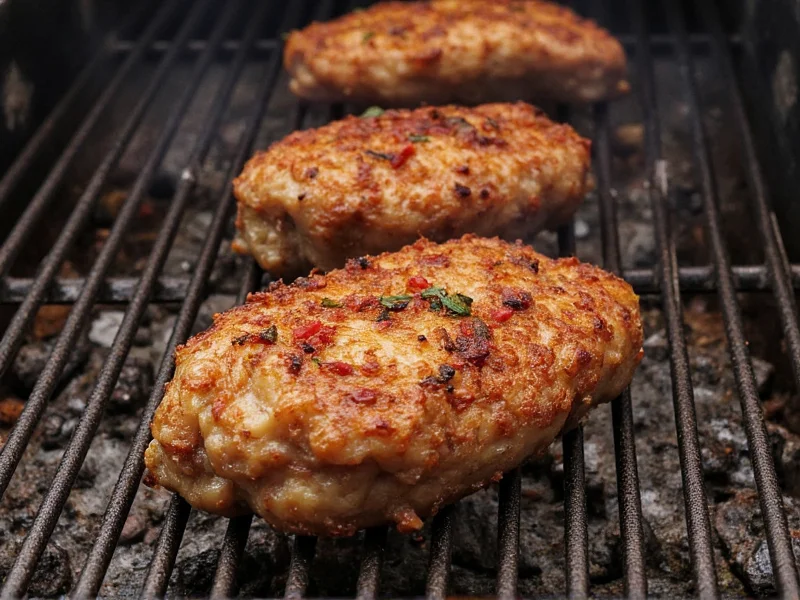Blackened seasoning has become a staple in many home kitchens since Chef Paul Prudhomme introduced his signature blend in the 1980s. Understanding the proper application and culinary potential of Chef Paul Blackened Seasoning can transform ordinary proteins into extraordinary meals with minimal effort.
Understanding Chef Paul's Blackened Seasoning Profile
The distinctive flavor profile of Chef Paul Blackened Seasoning comes from its carefully balanced spice composition. Unlike many commercial blends that prioritize heat over complexity, this seasoning delivers a harmonious blend of smokiness, moderate heat, and aromatic herbs that enhance rather than overwhelm the natural flavors of your ingredients.
When evaluating chef paul blackened seasoning ingredients, you'll notice the absence of fillers or artificial ingredients. The original formulation relies on quality spices that work together to create that signature blackened crust when properly applied to proteins and cooked at high temperatures.
Key Characteristics and Flavor Components
| Component | Description | Impact on Cooking |
|---|---|---|
| Heat Level | Moderate (not extremely spicy) | Provides warmth without overwhelming heat, making it accessible for most palates |
| Smokiness | Pronounced from paprika | Creates the characteristic blackened appearance when seared |
| Herbal Notes | Thyme and oregano presence | Adds complexity beyond simple heat |
| Salt Content | Moderate to high | Enhances flavor but requires adjustment in overall seasoning |
Optimal Applications for Chef Paul Blackened Seasoning
While many home cooks wonder what is chef paul blackened seasoning best used for, the answer extends beyond just fish and chicken. This versatile blend performs exceptionally well across multiple protein types when applied correctly:
- Fish fillets (especially redfish, salmon, and catfish) - the traditional application that made blackened cuisine famous
- Chicken breasts and thighs - creates a flavorful crust while keeping the interior moist
- Shrimp and scallops - works well with high-heat searing for restaurant-quality results
- Steak cuts (like flank or skirt) - provides excellent flavor contrast with meaty proteins
- Veggie applications - surprisingly effective on portobello mushrooms and cauliflower steaks
Mastering the Blackening Technique
Many home cooks struggle with how to use chef paul blackened seasoning properly because they misunderstand the cooking technique. True blackening requires:
- Drying your protein thoroughly with paper towels
- Applying a generous, even coating of seasoning (pressing it into the surface)
- Using extremely high heat in a cast-iron skillet (nearly smoking)
- Minimal oil (the spices will create the crust)
- Quick cooking time (2-4 minutes per side depending on thickness)
When executed correctly, you'll achieve that signature dark brown (not burnt) crust that defines authentic blackened cooking. The proper amount of blackened seasoning to use is typically 1-2 tablespoons per pound of protein, ensuring complete coverage without creating a thick, powdery layer.
Comparing Chef Paul's Blend to Alternatives
Understanding chef paul blackened seasoning vs homemade options helps determine when to use the commercial product versus making your own. While homemade versions offer customization, Chef Paul's blend provides consistent quality and the exact flavor profile that made blackened cuisine popular.
The primary advantage of using the original blend is its precise spice balance that's difficult to replicate at home without professional blending equipment. However, if you're watching sodium content or prefer less heat, a homemade version might better suit your personal blackened seasoning preferences.
Storage and Shelf Life Considerations
To maintain optimal flavor, store Chef Paul Blackened Seasoning in an airtight container away from heat and light. Properly stored, the seasoning retains its potency for 6-12 months. Signs that your blackened seasoning has gone bad include:
- Faded color (spices should remain vibrant)
- Loss of aroma when opened
- Clumping from moisture exposure
- Stale or cardboard-like taste
Recipe Integration Tips
For best results when using Chef Paul Blackened Seasoning, consider these professional tips:
- Season proteins at least 15 minutes before cooking to allow flavors to penetrate
- Don't overcrowd the pan to ensure proper crust formation
- Use cast iron for authentic results (non-stick pans won't create the same crust)
- Pair with simple sides like lemon wedges, remoulade sauce, or fresh vegetables
- Adjust salt in other recipe components since the seasoning already contains salt
Common Misconceptions Addressed
Many home cooks mistakenly believe blackened seasoning should create actual black char on food. Authentic blackening produces a dark brown crust, not burnt food. The term "blackened" refers to the dark appearance of the spice crust, not to burning the food.
Another common error involves using insufficient heat. Proper blackening requires extremely high temperatures to instantly sear the spices onto the protein surface. Medium heat will simply toast the spices without creating the characteristic crust.











 浙公网安备
33010002000092号
浙公网安备
33010002000092号 浙B2-20120091-4
浙B2-20120091-4